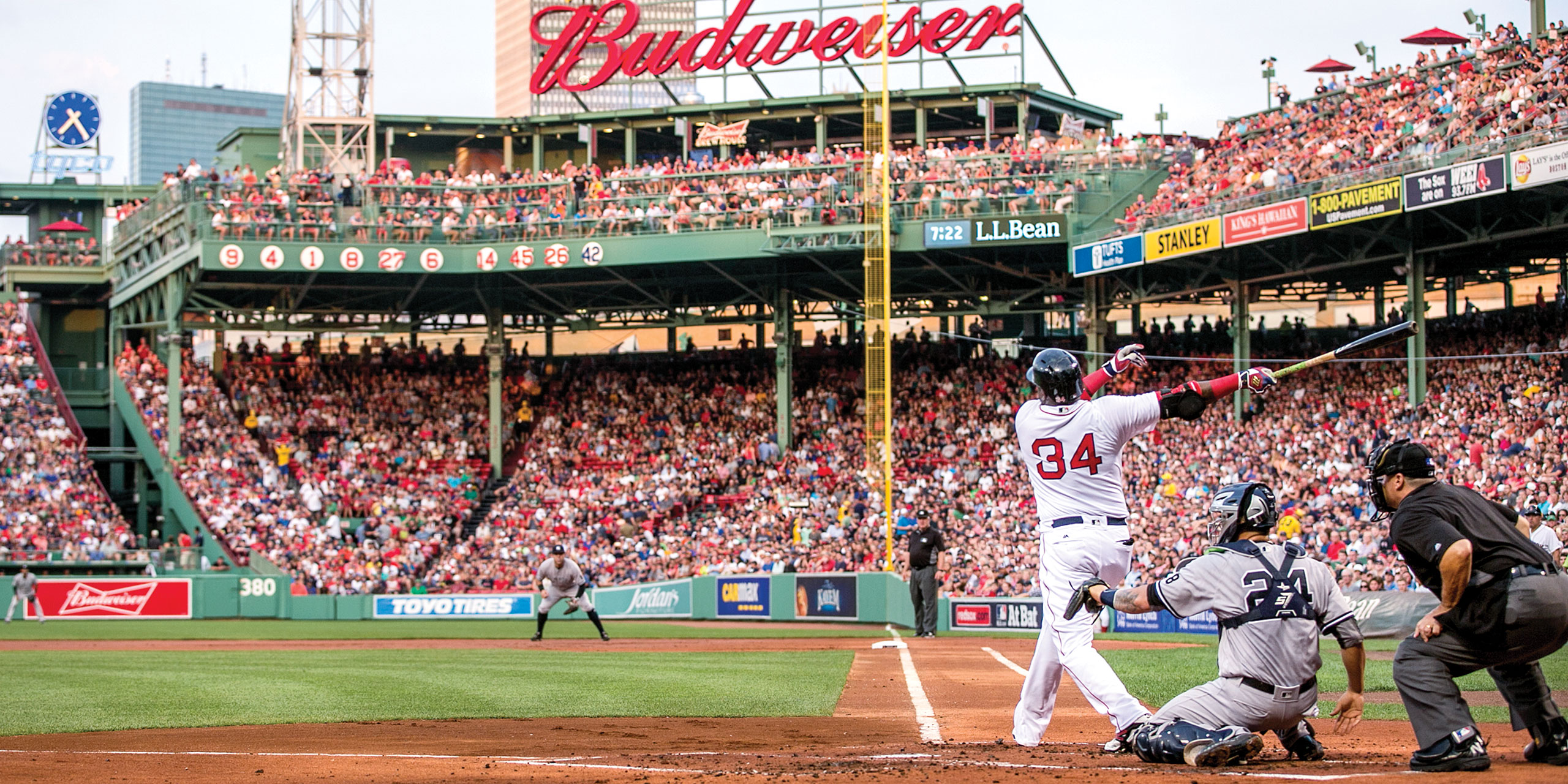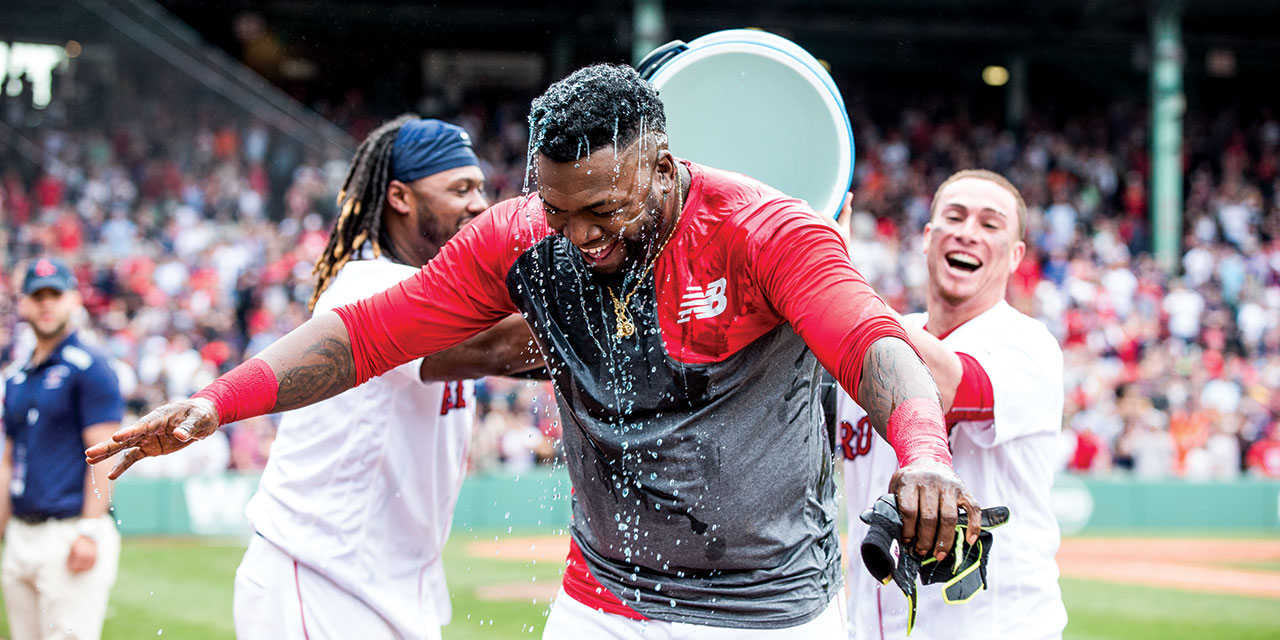For the stone to upend the mountain, some foundational element had to change. While many positive things accompanied him—the Sox were, after all, a rich, talented franchise—Ortiz grew to become the swaggering, singular centrepiece. His accomplishments piled up quickly: an extra-inning homer in game four of a 2004 ALCS that would have ended in a sweep at the hands of the Yankees had Boston not won that contest; a 14th-inning walk-off single 24 hours later; another home run in a game-seven romp in Yankee Stadium that capped a comeback from an 0–3 series hole, something no MLB squad had previously done. Ortiz was named series MVP. Seven days and four consecutive wins over the St. Louis Cardinals later, the Sox had their first World Series title in 86 years.
Boston has been drenched in championships since the New England Patriots won the Super Bowl in 2002—nine total, at least one in all four major sports—but no title meant more to the town than the one that seemed like emancipation from torment. World Series wins in 2007 and 2013 were, in a sense, spectacular after-parties. Ortiz—who boasts a .455 batting average and .795 slugging percentage in 14 World Series contests—earned MVP honours in the 2013 event, a six-game win over the Cardinals that, unlike the previous two titles, was clinched on Fenway grass.
That triumph carried added significance because it came half a year after a makeshift bomb was detonated near the finish line of the Boston Marathon. In a burg obsessed with sports, harming the marathon was like picking on the youngest member of a big Irish brood—yes, the family was coming after you no matter whom you messed with, but targeting the most vulnerable among them struck a different chord entirely. After a harrowing few days in the city, the baseball squad returned home for its first contest amid the emotional wreckage. As part of a pre-game ceremony addressing the tragedy, Ortiz took the microphone wearing an amended version of the team’s usual home outfit. “This jersey that we wear today, it doesn’t say ‘Red Sox,’ it says ‘Boston,'” he said. After offering quick thanks to some politicians and the police department, Ortiz squared up. “This is our f–kin’ city,” he said, triggering raucous approval, “and nobody’s going to dictate our freedom. Stay strong!”
In that moment, Ortiz—surrounded by people who’ve turned on more than one sports hero—covered the final leg in his journey from adored athlete to civic treasure. Yes, timing was a factor—if the marathon was a late-fall, not early-spring, event, maybe the reassurance would have come at a Patriots game. But could anyone imagine Tom Brady assuming a paternal role with such salty aplomb? Someday, a statue will afford Ortiz a permanent spot on Boston soil, though that immovable standing was really achieved with those loving words.






